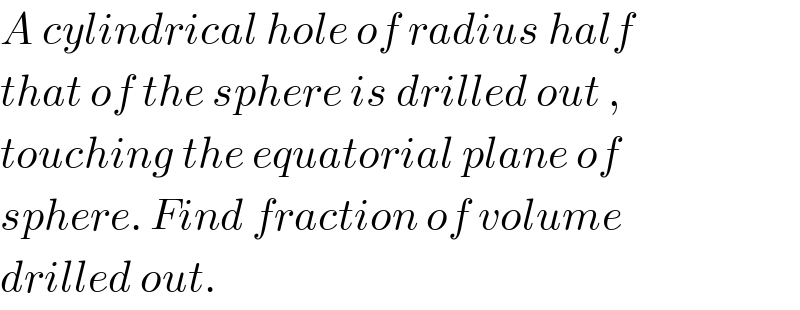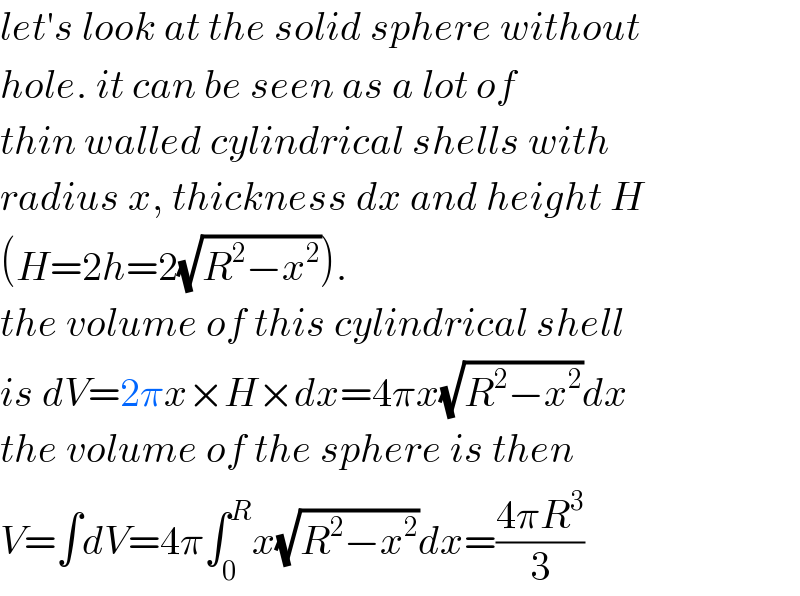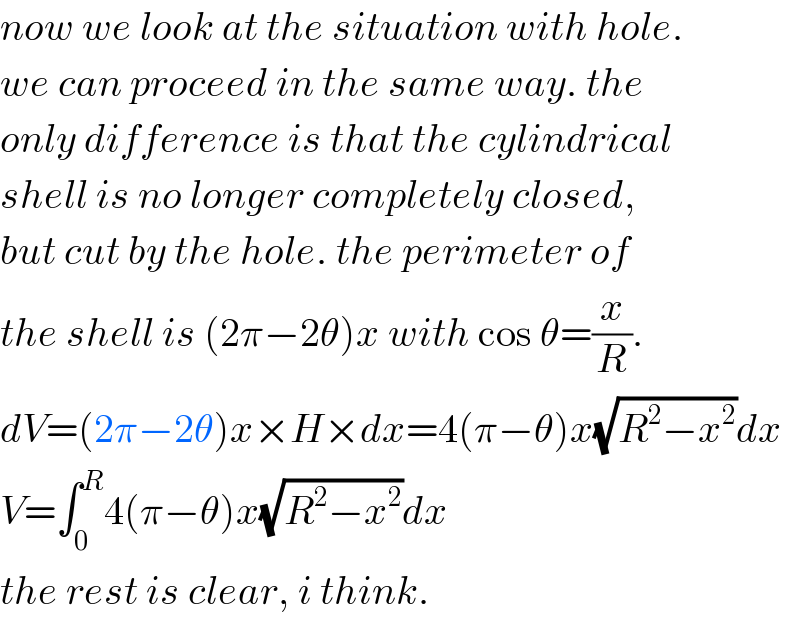
Question and Answers Forum
Question Number 125215 by ajfour last updated on 09/Dec/20

Commented by ajfour last updated on 09/Dec/20

Commented by mr W last updated on 09/Dec/20
I found something interesting about this problem: https://diynovice.wordpress.com/2012/12/02/hole-in-sphere/
Answered by mr W last updated on 09/Dec/20

Commented by mr W last updated on 09/Dec/20
![R=radius of sphere x=R cos θ x=0 → R θ=(π/2) → 0 height of shaded cylindrical shell=2h h=(√(R^2 −x^2 ))=R sin θ volume of shaded cylindrical shell: dV=2(π−θ)x×2hdx=−4R^3 sin^2 θcos θ(π−θ)dθ V=4R^3 ∫_0 ^(π/2) sin^2 θcos θ(π−θ)dθ =4R^3 {π[((sin^3 θ)/3)]_0 ^(π/2) −∫_0 ^(π/2) sin^2 θ cos θ θdθ} =4R^3 {(π/3)−(1/9)[3θ sin^3 θ−cos^3 θ+3cos θ]_0 ^(π/2) } =4R^3 {(π/3)−(1/9)[((3π)/2)−2]} =(((2π)/3)+(8/9))R^3 volume of hole: ((4R^3 )/9)(((3π)/2)−2)=(((2π)/3)−(8/9))R^3 fraction=((((2π)/3)−(8/9))/((4π)/3))=(1/2)−(2/(3π))≈28.8% i.e. more than a fourth but less than a third of the sphere is drilled out.](Q125221.png)
Commented by ajfour last updated on 09/Dec/20

Commented by mr W last updated on 09/Dec/20

Commented by mr W last updated on 09/Dec/20

Commented by mr W last updated on 09/Dec/20

Commented by mr W last updated on 09/Dec/20

Commented by mr W last updated on 09/Dec/20

Commented by mr W last updated on 09/Dec/20

Commented by talminator2856791 last updated on 10/Dec/20

Commented by mr W last updated on 10/Dec/20

Answered by ajfour last updated on 09/Dec/20

